We’ve been off the trail for about a month now. But we can still feel the effects of four months spent on the trail. I’m still processing the experience, and still recovering from it.
So, how has four months of bikepacking changed us? What were the lessons and insights learned? Here are a few reflections.

Simplicity
No doubt about it, there’s nothing like living out of your backpack to make you realize how little you actually need. Surely the average American lifestyle is one of excess, but you already knew that. The world would be a better place if everyone backpacked, or bikepacked at some point in their lives. You get a glimpse of the beautiful simplicity of it on shorter trips, but a deep appreciation came once the days, miles and adventures began to blur together. After 3 months, life on the trail is the only life you know and pretty much the only one you can remember. You have a rhythm and a familiarity to living off the bike that is difficult to attain on shorter journeys.
We had a number of belongings sitting in a back shed, and a few pieces of furniture being used by the tenants in our old house. So our footprint was not as small as it may have seemed to us as we dragged it over downed trees and pushed it up steep hills. Yet, I didn’t miss anything we had back home. If it all disappeared, I might have been disappointed, or I might have been relieved. I could barely even remember what we had back there — other than our other bikes. (OK, I do admit that I missed riding my other bikes — specifically unloaded ones — but I think I could be plenty happy living and riding off just one.) It made me somewhat reluctant to return to the bloat of normal living, and having to deal with so much ‘stuff.’
There’s a wonderful power in being fully self-contained and able to endure just about anything the world throws at you. You can stop whenever you want, with no real constraints — freedom!

Back in normal life
The transition back to regular life has been an interesting one. It was a little delayed for us, since we spent the first three weeks visiting family and still traveling.
At first it was such a relief to know where we were sleeping every night. To have a constant roof over our head. To not be at the mercy of the weather any more. To not be at the mercy of a trail that can change character instantly. To have steady access to food! And *good* internet access. It was glorious.
I thought I would wish that I were back on the trail, with more CDT to explore ahead, but I really didn’t. It felt like the chapter was closed, and it was time to move on to something else. The early arrival of winter made it easier to visualize that the season was over. The journey was over. The fatigue, both mental and physical, also made it easy to see that. I think more than anything I try to strive for balance, and with four months on the CDT the pendulum swung pretty far in the outdoor adventure side of life. It’s time to seek that unattainable goal of balance and do something else for a while.
Of course, as is human nature, the pure pleasure of having the basics (food, warmth, shelter, internet – ha!) steadily covered and certain, did eventually wear off. I got used to it, and am already able to take it for granted. It’s too bad that sense of gratitude doesn’t last longer, though I suppose it allows us to seek higher meanings and things to be grateful for.

Thru-hikers, trail community
I’m truly in awe of anyone that thru-hikes the CDT. What an incredible challenge, and one I am not so sure I could successfully complete myself. Thru-hikers are also great people, and a very welcoming community. Going into the CDT we weren’t quite sure what to expect for a reception. We know there are those that would like to close old (or new) sections of the CDT to bikes. We did not meet any of those types on the trail. The response we got from hikers was overwhelmingly positive. They loved seeing us on the trail and we loved meeting them.
The trail community is an incredible thing. The instant acceptance and connection that you feel, simply because we are walking (or riding) the same direction is something that reaffirms our humanity. Nobody asks what you do for a living, or what your standing in life is. Everyone has but the meager possessions they can carry with them. Thru-travelers are reduced to the things that really matter. We made some good friends, despite not spending huge amounts of time with many of the hikers. I am going to miss that instant connection, with travelers and especially with those on the CDT.
I also enjoyed the way words and rumors traveled along the trail. It was fun to see how people always had a way of finding each other or bumping into each other, without the aid of modern technology. It made me think back to traveling in times of old. Thru-hiking and thru-riding are keeping some of those old ways of life alive.

Changes on the divide
It has been a decade since I last traveled the continental divide in the US. In 2004, I toured the gravel road version of the route, from Mexico to Canada. It was fun to bring back memories of that trip that had long been forgotten when we returned to certain towns, or coasted down bumpy dirt roads.
By and large, I’m happy to report that the divide is still the same divide — remote, wild and unrelenting. It’s the most difficult place in the country you could design a hiking trail or a mountain bike route. The people along the route, if anything, have gotten friendlier. Some of the towns and businesses have realized that hikers and cyclists are good people and good for the local economy. Many of these towns have seen declines in their ‘old’ way of sustaining themselves (often mining or other industry), and need to figure something else out. Divide tourism is a resource that isn’t likely to run out anytime soon, and the towns that have begun to embrace it seem to be thriving.
The number of people traveling the divide has shot up incredibly. In 2004 only a small handful of people toured the GDMBR. Even fewer attempted a thru-hike on the CDT. I ran into maybe only a dozen total other hikers and cyclists. This year we met over 80 thru-hikers and maybe 50 or more cyclists.
One major negative change is the bark beetle. It’s funny how little we (as a species) know about managing forests. Our arrogance in forest management is a topic worthy of its own book. Fight fires, don’t fight fires, log, don’t log — we think we know so much, and then the bark beetle comes and wipes out entire forests.
The difference from 10 years ago is drastic. We were constantly seeing dead forests, and often traveling through them. Many were still very much alive 10 years ago. Interestingly, some areas that were clear cut years ago and now coming back with new growth seemed immune to the beetle — so far, anyway.
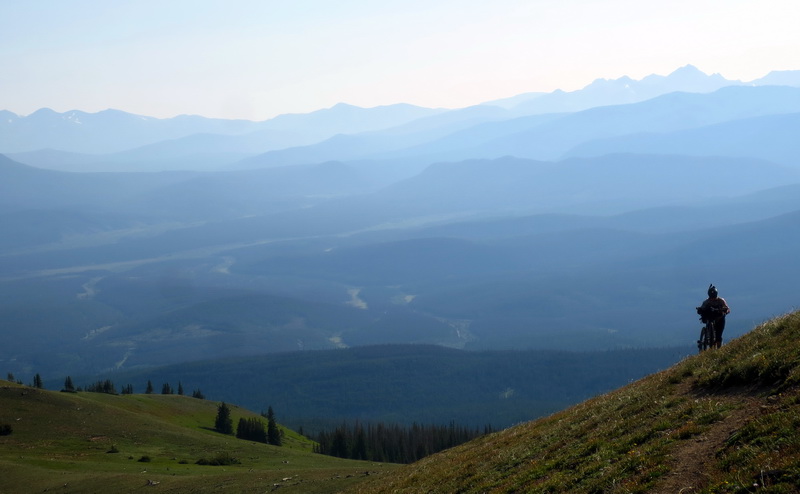
Slow beauty
The CDT is a hard trail for bikepackers. It’s not designed or intended to a be a bike trail, let alone a bikepacking trail. We had many days where we failed to log more than 30 miles, despite putting in a full day’s effort. This led to closer to a thru-hiking pace (sometimes slower!), and, it was one of the unexpected positives of the trip.
I found that there is *something* to traveling slow. Something to really getting to know the creeks, the passes and the small mountains. You can’t just coast by creek after creek and mountain after mountain on a graded road (or in a speeding car on a highway!). You feel each one of them, and often, on the divide, reach the summit of each one of them! I don’t know if it is something inherently ingrained in the human psyche, or what. But it’s almost as if the human brain is better suited at processing only a certain amount of ground covered in a day’s time. Go over that distance and you’ve lost something. Lost your connection.
This sort of sounds like Paleo-talk, but I noticed it throughout the trip. Our slowest days were some of our best. They were also some of our hardest, so it may have just been that effect that made them more meaningful. But it seems like maybe there was something deeper, with slow days taken throughout a long journey.
So, why not ditch the bicycle if traveling slow is so great? I am not convinced that the mode of travel matters, or that instantaneous speed matters. It’s average speed over periods of time that matters. With difficult enough terrain (e.g. the CDT) a bikepacker is forced to travel slow. Of course, hikers are always “slow”, in that sense.
But even on foot, you can exceed this ‘natural’ ground covered, say in a 100 mile trail race. Complete one of those suckers in less than 24 hours and you are crushing it. Another issue is that when traveling solely by foot it almost inevitably means lots of hitch-hiking. Being suddenly whisked into towns some twenty or more miles away also violates my idea of traveling slow. On a mountain bike, you can pedal and earn your resupplies, and not lose the human powered connection that can be severed by moving at 70 miles per hour.
For that reason (and many others) I see bikepacking as the most versatile and rewarding means of backcountry travel. If you’re already a bikepacker, I recommend traveling slow and choosing difficult routes that force it (at times). I found it to be a remarkable way to see and experience the natural world.

Deep fatigue
We’re still not recovered from the CDT, a month out. We’re sleeping 10 hour nights to make up for time spent rolling around in one pound sleeping bags. We’re keeping rides short and feeling the onset of tired legs more quickly than we’re used to. We’ve started trail running as a way to keep ourselves off the bike, to ease those fatigued muscles. Our hike-a-bike and general trail BS accounts are still overdrawn and are only slowly being paid off.
I’ve spoken many times on the blog here about the deep fatigue that settled in on us somewhere in Montana. I suppose it wasn’t wholly unexpected, but it did cause some alarm and even some doubt about the completion of the trip.
Starting out, the major appeal of the CDT was the exploration and the adventure. The longest singletrack route open to bikes! It’s never been thru-ridden before! We had enough experience bikepacking to be reasonably confident going in. We thought that finishing wouldn’t be much of an issue, barring any number of bad luck scenarios. After all, it’s “just touring”, not racing!
Yet, sitting in the west Big Hole, watching the storm clouds gather against us, feeling the dread of another unrideable rocky pitch in front of us, success was far from certain. There hadn’t been any bad luck, it had just been a long and arduous trip. The CDT had taken its toll. It wasn’t just simply a longer version of things we had already done. Going longer wasn’t merely a linear, or proportional, increase in the difficulty. It was compounding, and increasing maybe as n-squared or n-cubed, even though we were touring and not in a hurry.
And this might have been the longest singletrack tour yet. Sure, people regularly tour for years — on roads, and generally with much more gear. The difficulty of the trail necessitated (in our minds at least) running a very minimal set up, and one that is not very conducive to rest and recovery. Hike-a-bike is a very draining activity, generally speaking, and one that is not considered enjoyable by most people. We did lots of hike-a-bike. 🙂
In the end, we found more than just the exploration and adventure. More than just a really long trail tour. It was a definite challenge to finish the entire thing and keep it together. As a result, I suppose we should be tired.
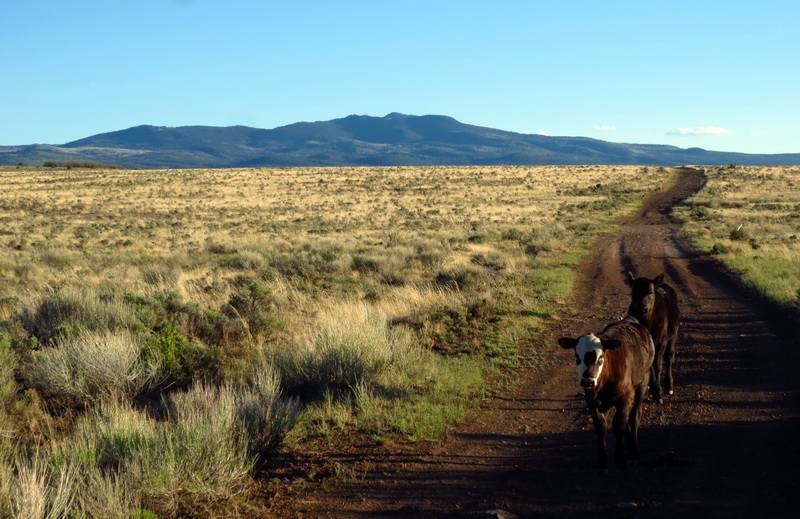
Cows
It is impossible not to notice the omni-present bovine throughout our forests and ranges. After months of seeing cows, cows and more cows, I couldn’t help but wonder if it wasn’t a little excessive. Beef is a big industry, I suppose, and as I partook of many burgers along the way, it is one I definitely support. Some big changes would be needed to lessen the impact and presence of cows, but they would probably be good ones. We don’t know that much about responsible stewardship of the land, but you do have to wonder if all these cows really belong in such beautiful and otherwise unspoiled places.
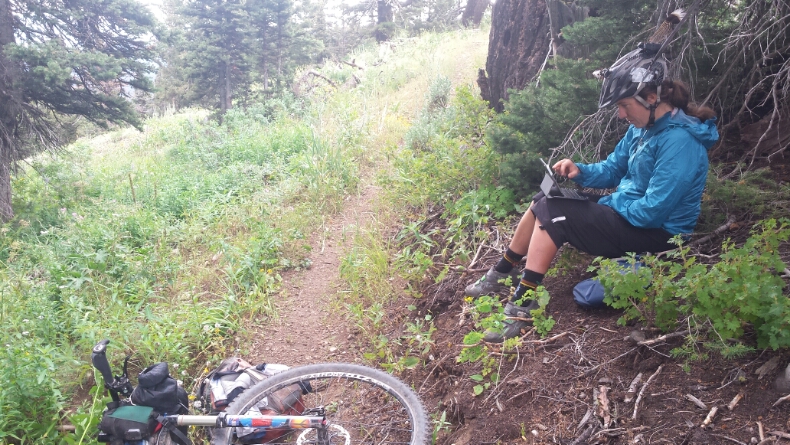
Working from the trail
Both Eszter and I were fortunate to have gainful employment we could pursue from the trail. We bounced laptops to seven or eight trail towns, and performed other tasks from our phones and an iPad that Eszter carried. We loved to be able to ‘accomplish’ something while resting on the trail, or while waiting out weather. Our bank accounts loved that they weren’t in a steady decline the entire summer.
Though thru-travel is a most noble activity, in my opinion, it still feels a little one-sided, or unbalanced. After a week on the trail, it was great to roll into town not only for food and a soft bed, but to catch up on emails, connect with friends, build trackers and fix bugs. Do something ‘useful’, or at least something that feels useful to us. It felt like a more balanced way to travel the trail, and we were very lucky to be able to do it. There were a few stressful days of trying to wrap things up before checkout time and hitting the trail, but any stress was quickly erased out on the trail.
If you can manage portable work from the trail, I highly recommend it!
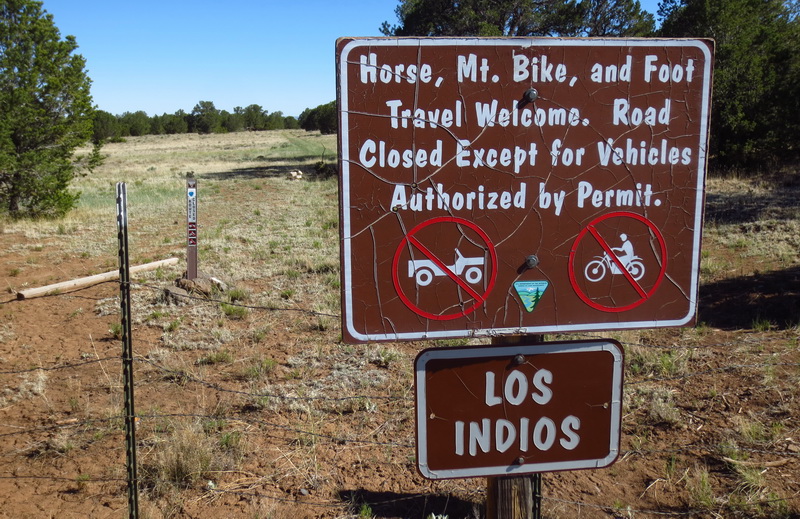
Bike access
The CDT is primarily a trail for hikers and equestrians. That is the original vision and legislation of the trail. However, mountain bike access is specifically mentioned as an acceptable use, where it doesn’t interfere with the primary purpose of the trail. Given our experience on the trail, I do not believe that mountain bike access, especially in remote areas, has any negative impact on the trail or those that use it. I believe it has a positive impact. I also believe that if the CDT had been envisioned in more modern times, quiet and human powered travel would have been considered a primary use (outside Wilderness). Just look at the positive example that the Arizona Trail (a more modern trail) has set for multi-use. Mountain bikers have long been a part of the construction and maintenance of the trail, and it’s becoming the premier long distance trail in the southwest.
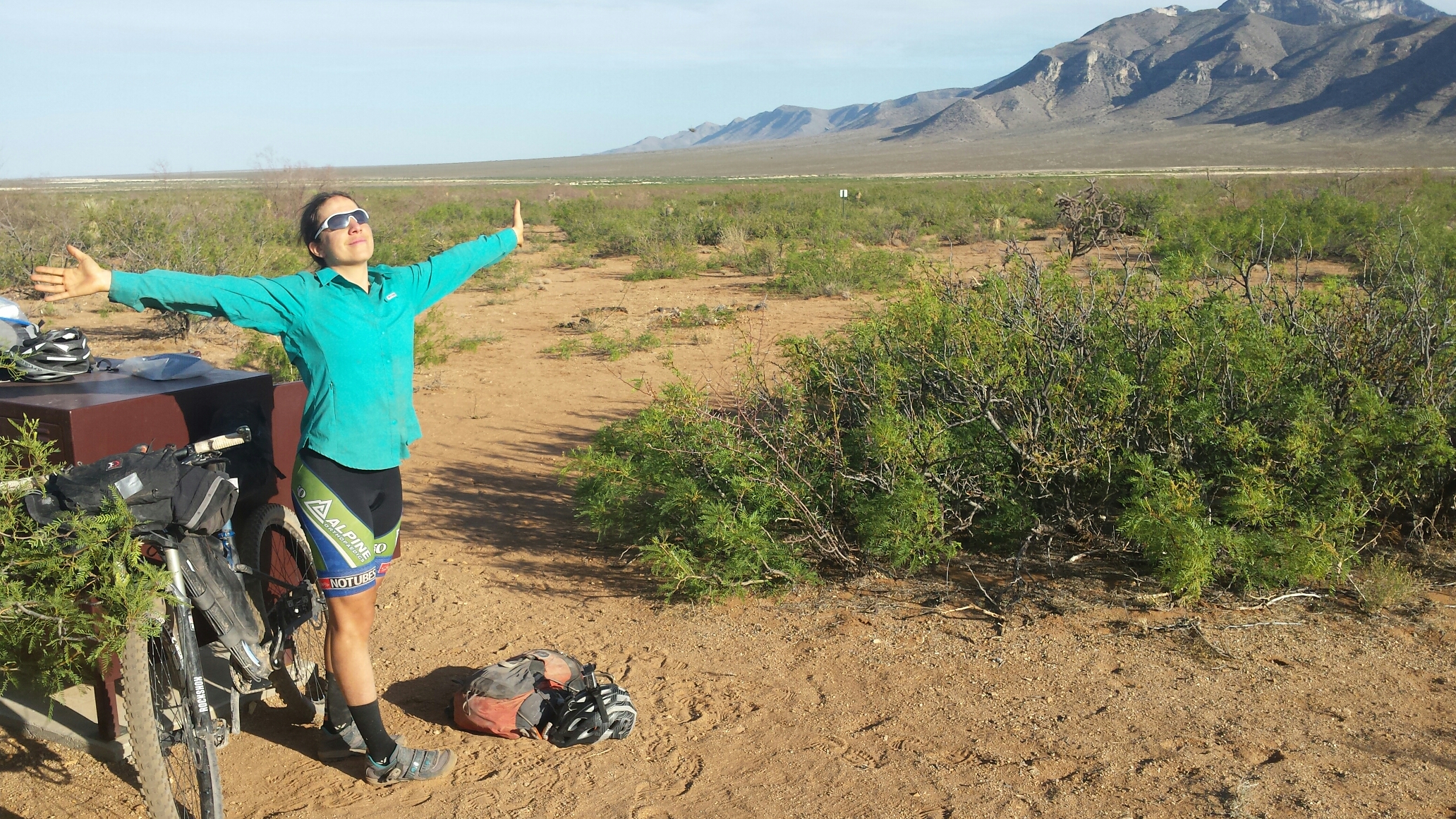
Gratitude
It would be remiss to not thank the universe at large for the fantastic fortune we met on the trail. Our bodies held up remarkably. The bikes suffered no major mechanicals. Crashes were few and minor. Encounters with strangers were nearly all positive. We both got along amazingly well throughout, enjoying an incredible adventure-of-a-lifetime together. Sure, rain and snow were factors. Bugs ate us alive. But that’s the divide. I still consider us lucky in all of those areas. We spent an incredible amount of time above treeline and had no close calls with lightning.
Of course, we have to thank everyone involved in the CDT community — from on-the-ground volunteers, to federal workers, to trail advocates. The dream of the CDT is a good one, and many have put a lot into this trail (with much more still to go!). Having been involved with some of the development and construction of the AZT, I have a small sense of what all this entails. It’s a lot of work. We owe a big debt of thanks to Jonathan Ley and Jerry Brown, who independently provide and maintain the best beta on the trail.
We also had the generous support of many friends and family. My business partner at trackleaders, Matthew Lee, deserves special mention, for putting up with long lapses in communication and limited availability for work. Our families and friends were behind us all the way. Local mountain bikers that we’ve never met offered beta on CDT and non-CDT trails. Friends opened up their houses to us. Motel owners gave us late checkout times and shipped our bounce box for us. People we met along the way helped us and made the journey just that much more awesome for us.
I have to give the sincerest thank-you to Eszter, for following me through the CDT and trusting me with the route and a lot of the other decision-making. Given all the difficulties and unknowns, her patience with me and the trip in general was incomparable. I can’t imagine a better adventuring partner.
Quite a few of you followed along and offered encouragement along the way, particularly during the “Slag-a-meltdown” and other low spots.
Thanks, everyone! Thanks, universe.
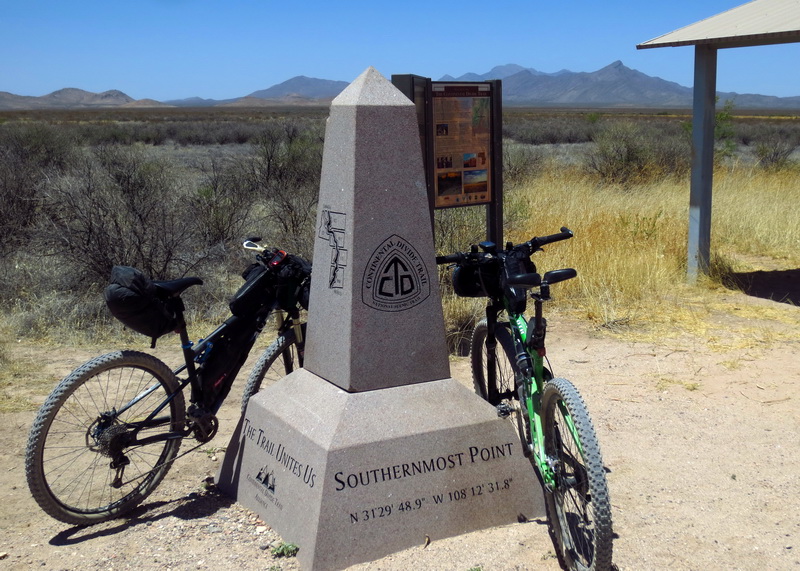
The Future
So, what’s next? Well, for us the answer is we don’t know. And that’s just fine. Regular life with a regular roof overhead is pretty nice right now. The luxury of a fridge stocked with food is even better. I’m sure something will spark our interest and merge with increasing energy soon enough. The world is a huge place and there isn’t enough time to explore it all!
How about the future of riding bikes on the CDT? I think that future is bright! Bikepacking is only gaining in popularity and people are beginning to see beyond dirt road touring to really get into the backcountry.
I think there is plenty of room for a second, and third, groundbreaking and exploratory trips on the CDT. There are plenty of options we did not explore, and that need to be explored. It wouldn’t be too difficult to “one up” us and ride more of the official trail. Plus, more sections are being built and the trail is ever-changing.
Many options exist for melding the CDT and GDMBR into a singletrack/road mix that can easily take a lot less than four months. No matter how you slice it, I highly recommend the experience of “riding the divide.”
Bikepacking on the CDT is just getting started. Maybe you’ll be next?
We’re here to help!
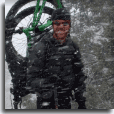


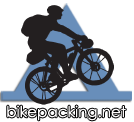
The yin and the yang….
I have been living vicariously thru the two of you all summer. For that, I thank you. My only curiosity revolves around your gear. More specifically, how did that saddle work out?
Scott – you should seriously consider writing a book about this adventure. No doubt many tales have yet to be told.
Congratulations guys. I’m just getting up to speed on your trip, but Scott, thanks for the great post-op. Thanks for coming at the subject from pretty much all possible angles, and for your honest reporting. Also thanks for inserting that brief inquiry regarding the omnipresence of bovine on our public lands from stem to stern along the divide. Something needs to change that won’t change until we change. (Of course I’ve heard the counter-argument that a rancher out of business is a ranch soon to be on the suburban chopping block. All I’m saying is there’s something wrong with the business model that depends on stocking public lands to the hilt with cattle.) Anyway, I digress. The deep fatigue after multi-months of earnest adventuring is entirely normal in my experience (albeit on foot exclusively). Sure as tomorrow dawns, there is always another adventure waiting to be dreamed up. I’ve learned that the last painting hanging on the wall isn’t nearly as interesting to reflect on as the blank canvas awaiting fresh paint. The journey, like life itself, lies in the doing.
Here in San Juan Nat’l Forest, they are slowly reducing the number of cattle and sheep in the forest, closing them out of some areas completely.
thump monkey: I’m putting together an overall CDT page that has a link to our gear list that Eszter wrote up during the trip. It’s here: http://www.topofusion.com/diary/cdt-2014-diary/
I still need to do a review of the Spiderflex saddle over on bikepacking.net, but in short, it worked out quite well. There are positives and negatives, but I liked it overall. For climbing and long repeated days in the saddle, it was great. The downside is having to run a dropper post and thus, no seat bag. But that ended up keeping my bike light for all the hike-a-bike.
Brett: thanks for the kind and thoughtful words. I suspect and hope that bovines will be on the decrease — slowly. Besides the obvious demand for beef, the main reason they are allowed is ‘tradition.’ It’s always unfortunate when tradition trumps situations when we know better. I’m actually rarely bothered much by the presence of cows, but on the divide there were *so* many that it was impossible not to think it excessive.
Here’s to all the blank canvases ahead. Well put.
Hey Scott, great reflections……meeting you and Ezster on the GDMBR in New Mexico was one of the highlights of my trip….your wisdom, advice and foresight was very much appreciated and helped me immensely. I’m very much missing my life on a bike now that I’m back and am already planning another bike packing trip……The Idaho Hot Springs Loop next summer. After the GDMBR it’s going to seem like a cake walk!! Life is good!…..
A lovely detailed set of reflections (and pictures)
Thanks for sharing Scott!
[…] written all sorts of reflections, statistics, and advice. He’s written a 2,000 word summary which I’m guessing will get […]
Hi Scott,
Great write ups, thanks. Makes for intersting reading for me as 3 of us were bikepacking parallel to you but further west at the same time as you 🙂 We rode San Diego to Whistler in Canada from beginning of June to early September 2014, through the Sierra Nevadas and the Cascades.
Funnily enough our initial plan was to ride the CDT, but we got the impression there was going to be too much hike-a-bike. Guess I’ll have to do it now to find out the answer…
Looks like there’s a lot of work gone in to this site, write ups, etc. As we say here in France, Bravo!
Thanks,
Finn